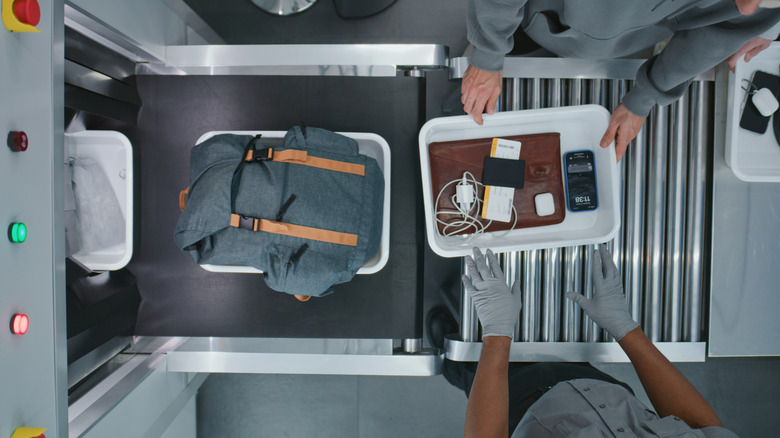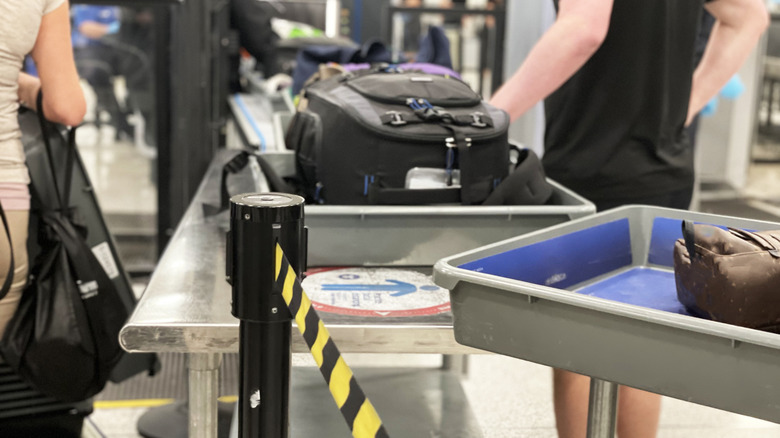What Electronics Need To Be Scanned At TSA Security?
Ah, yes, the infamous TSA security checkpoint process where you have to remove most, if not all, electronics from your bag, take off shoes, your belt, any metal or jewelry, hats, you know the drill. Except, things are changing. Recently, the TSA actually dropped the shoe removal rule for domestic airport travelers. Moreover, a few policies have also changed in the interest of brevity, including TSA electronics rules specifically. But other than noting which devices you can and can't bring, among other things, it's also helpful to know how you have to engage at checkpoints. Sure, you don't have to remove your shoes anymore, but what electronics do actually need to be scanned at TSA security out of your bag?
As a general guideline, the TSA will usually tell you anything larger than a smartphone needs to be removed from your bag and put into a bin, with the largest devices like laptops going in their own separate bins. But also, that's more of an unofficial rule, which means it's at every agent's discretion and they can still ask you to remove certain items. Retro handhelds are usually about the size of a smartphone, you may have to remove those, certainly a Steam Deck or Nintendo Switch. Cameras can usually stay in the bag, but may need to be removed when in their own case or if they're extra large.
Laptops and tablets always need to come out. Large charging bricks or power banks may need to be removed. Portable drones and sometimes accessories may need to be removed. Even electronics-based toys may need to be scanned separately if kids are tagging along. Curious minds might inquire why these electronics need to come out of their homely bags and receive exclusive scans. That requires a brief, yet separate explanation.
Why do you have to remove large electronics for scanning?
Did you know that you can bring robot vacuums on a flight? It's true, you can find them in the complete list of allowable items, which is wild. Also, toy robots, toy guns and weapons, small televisions, speakers, and solar panels if you check with airlines first, but no rocket launchers, unfortunately. Other electronics the TSA bans from carry-ons include stun guns and tasers, hair straighteners and curling irons, and power tools. Yes, fellow geeks, TSA lets you bring video game consoles in your carry-on. Many of these devices still need to be removed from your bag and put into a bin while passing through security checkpoints, namely for separate scanning. That's because dense electronic components like batteries, metal circuitry, and the internal hardware can block viewpoints while scanning. In other words, if your laptop is in the very back of a bag and the machine is scanning from the back inwards it can block the view of other items in there, making it difficult for agents to thoroughly check belongings.
Moreover, large items are visually inspected for tampering to ensure they're not disguised — like, and bad analogy here, a bomb or IED built into a phone or tablet. While not always true, modified electronics can be a sign that something is awry. Some airports utilize new 3D scanning technologies that work better with items outside of bags, too. That also explains why you have to put large items in a separate bin and why you're directed not to put other things on top or obscure views. The agents and the machines need a clear view of everything in the bin, including what's inside the devices. The good news is as the scanning technologies get better, these rules may change.

